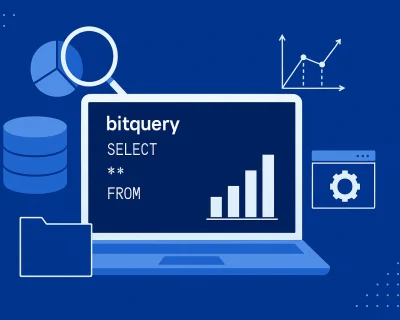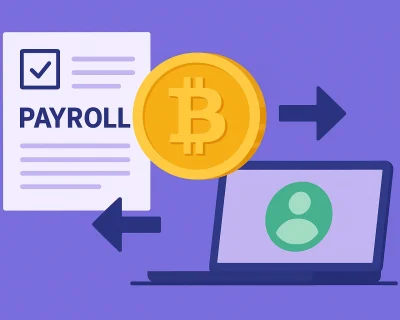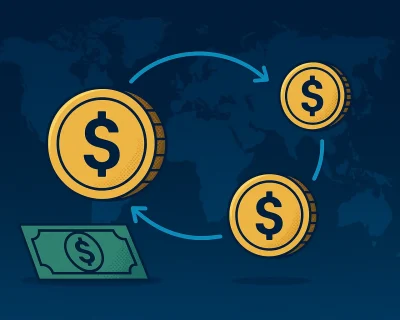Waves Making Waves in the Blockchain Sea
At the end of 2008, a little pond appeared by the name of Bitcoin. And as more and more ideas started pouring in, the pond transformed into a lake, then a sea. The sea is today’s crypto community, and this sea has got Waves.
What Is the Waves Crypto?
Waves is nothing less than the cryptocurrency that comes with the Waves platform. And although by the basic definition it’s a coin because it’s based on its own blockchain, Waves also works as a token for the Waves platform.
Currently, there is a total supply of over 109.8 million Waves and all of them are circulating on the market. And at the time of writing this article, this cryptocurrency has a market capitalization of $253 million and a price of $2.32.
Some of the main use cases of the Waves currency on the platform are:
- A digital currency;
- Trading and exchanging;
- Fees for creating custom tokens and smart contracts (around 1 WAVES);
- Staking and incentivizing staking.
Staking and Leasing
In cryptocurrency, staking usually means to deposit some funds and gain rights to vote for the next block. Waves implements a variation of the traditional Proof-of-Stake consensus algorithm to maintain network integrity.
This variation is called Leased Proof-of-Stake (LPoS). The LPoS consensus model is described as the “enhanced” version of the Proof-of-Stake model. Instead of running a full node, users can “lease” their tokens to the full nodes that keep the network operational, at a rate of 0.002 WAVES per leasing.
However, if you hold 1,000 WAVES on your own, you can start a full staking node and stake by yourself. It was hard to achieve that in the beginning, as Waves weren’t always so accessible to start staking with a full node. Initially it required 10,000 Waves, but the amount was significantly reduced to promote decentralization.
The Waves Blockchain platform
Even though the Waves blockchain platform is not meant for surfing, you can still “ride” Waves to make your custom tokens quickly and efficiently.
The Waves Blockchain platform is thought out to give developers the ability to create tokens in as little as one minute. Although, you should always plan your token thoroughly before launching it.
The Waves Platform describes itself as “an open network for Web 3.0 applications and custom decentralized solutions, with a range of purpose-designed tools for making the process of developing and running dApps easy and accessible.”
The platform was launched in 2016 and was designed to address the needs of developers and companies that want to leverage the properties of blockchain systems.
In 2017, Waves launched its LPoS mainnet, decentralized exchange, and the Waves NG protocol. One year later, the Waves development team delivered the first implementation of smart contracts, followed by the release of RIDE in 2019.
As for RIDE, it is the native programming language of the Waves platform that is designed to give Web 3.0 developers a straightforward and predictable tool for programming logic.
The Waves platform is built as a two-tier architecture to deal with the potential scalability issues. It is able to deliver 100 tps and can reach a maximum of 47,000 tps, if well optimized.
How so?
The network is designed to maintain two types of nodes: lightweight and full nodes.
The full nodes store the blockchain, confirm transactions, and manage interactions that take place on the Waves network.
The lightweight nodes work only with the current state of the network to establish simplified payment verification processes. They never download the blockchain and they rely on the full nodes for heavy computation and encrypted data storage.
Waves NG Protocol
The Waves NG protocol is in fact borrowed from the Bitcoin NG protocol whitepaper.
The NG protocol came out to address regular weaknesses in a proof of work blockchain system.
The maximum rate of transactions a blockchain can handle is determined by the block size and the block interval (the amount of time that passes between the creation of two blocks). You can increase the speed by reducing the latency or increasing the block size.
But artificially reducing the latency reduces security, increasing the possibility of a malicious fork taking over the network.
And artificially increasing the block size can lead to DOS attacks (people keep adding transactions) and can take longer to validate transactions, ultimately increasing the latency.
The Bitcoin NG paper explores the idea of having one transaction in each block instead of a set of transactions.
In the NG protocol, there is a key block and a lot of micro blocks.
With every key block, a leader is elected to perform basic proof of work mining. The key block doesn’t contain transactions at first, only the public key of the leader, so they have to create as many micro blocks as they can.
After the key block is generated, other miners start adding transactions in the created micro blocks that will be signed with the key one managed by the leader. This situation goes on until a new key block will be added.
In the Waves proof of stake process, the NG protocol works with a liquid block principle in which the number of transactions is flexible. The key block is generated once every minute and the micro blocks get created in 10 seconds.
40% of the transaction fees go to the current leader and 60% go to the following leader if he acts as intended and adds new transactions on his key block.
If a leader tries to create a fork to double-spend, he will lose all the fees when detected, and the one who found him will get rewarded.
Waves Smart Contracts and Tokens
In the Waves platform, a token or a smart contract can be created in one minute thanks to the smart contracts programming language RIDE. The blockchain scripting language has strong static typing and no loops recursions or go-to expressions. Also, the Waves’ RIDE language is deliberately non-turing complete to prevent mistakes and vulnerabilities.
However, turing completeness can be achieved by spreading operations over multiple consecutive blocks.
In terms of fees, Waves has fixed fees for any type of script with no variables or gas limits.
Also, dApps developers can receive funding for their projects, especially for:
- Decentralized Autonomous Organizations;
- Decentralized auctions;
- Prediction markets;
- Decentralized gambling;
- Decentralized games;
- Waves Token Exchanges;
- Charity;
- Metaverse projects;
- Oracle Launchers.
Key Takeaways
- The Waves coin is the native token of the Waves platform. It is valued at around $2.32, with a market cap of around $253 million (at the time of writing).
- Waves uses a Leased Proof-of-Stake algorithm. Therefore, holders can stake their funds either by leasing to a full node or by opening up a full node. The minimum amount necessary to open a full node is 1,000 Waves.
- The Waves platform is built as a two-tier architecture to deal with the potential scalability issues. It is able to deliver at least 100 tps.
- Waves smart contracts are written in RIDE. This is a blockchain scripting language that has strong static typing and no loops recursions or go-to expressions.













